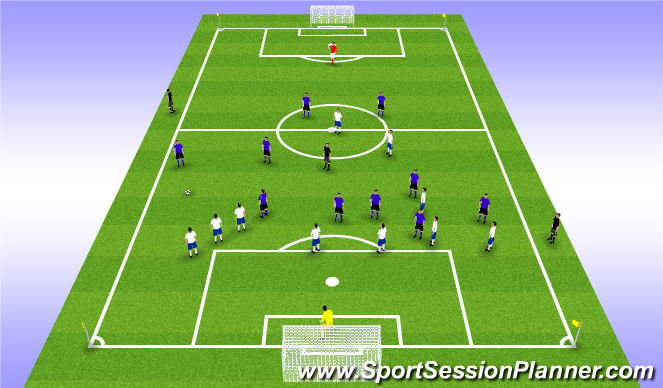Football/Soccer Session (Moderate): Setting Wall When Defending Free Kicks
Profile Summary

| Name: | Giovanni Pacini |
|---|---|
| City: | Quincy |
| Country: | United States of America |
| Membership: | Adult Member |
| Sport: | Football/Soccer |
Description
This provides a basic guideline when defending set pieces.

See the guidance at the top of this page to understand why you are not seeing interactive Football/Soccer images.

Coaching in the Game
In this Coaching in the Game (CIG) phase, match conditions apply with a "referree" making arbitrary calls once the ball enters the defending third of the field. It is in this environment where a more game like atmosphere contributes to the players organizing the defenseof the called free kick.








 Play animation
Play animation Play step-by-step
Play step-by-step Repeat (toggle)
Repeat (toggle) Full Screen
Full Screen Pause
Pause Stop
Stop
Free Kick Wall Number Guide
The diagram featured provides a guideline in reference to the number of players needed in defending free kick situations. The key word "guideline" is just that as circumstances may nesessitate the addition of players and not nesessarily the reduction. For example, the player taking the kick may be a highly skilled striker of the ball and certainly the closer the ball is to goal would require another player or players. The following are the key components in defending set pieces-
* Once the whistle is blown signaling a foul, immediate attention is given to defensive organization. This is not a time to be emotional over a call or become argumenative with the official. Emotion diminishes the ability to think analytically.
* The goalkeeper is crucial in this situation. The 'keeper is expected to call out the numbers needed in the wall and to insure its proper placement relative to the angle of the ball to goal. Walls are expected to cut the goal down in size with it covering one portion with the goalkeeper managing the other. In areas where 1, 2, and 3 players are advised, the near post is the indicator of where the first player positions himself.
* Those not situated in the wall are expected to man mark keeping their body between the goal and player being marked.
* In indirect kick situations, it is advisable to have a player adjacent to the wall who upon the ball being put into play, charges the ball hence minimizing the time the ball can be struck as well as posing a distraction to the player striking the ball.
* It is advised that the wall leaps in unison once the ball is struck in essence making it "taller'.
* When defending teams who look to compromise the wall by inserting one of their own into the wall, the defending team should link at the elbow making it impossible to insert the attacking player in it. In essence, the wall becomes literally linked as one unit.
Sessions which feature the mechanics of setting up the wall as well as the roles of players outside the wall is a must. This environment allows for a number of repititons allowing for the sorting out of any issues which may compromise the set piece defense.
From here, the team moves into a Coaching in the Game segment.